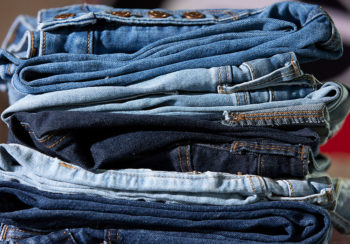Thirty years ago textile engineer Gajanan Bhat was at his first job, working for a company that used recycled plastic bottles to make carpets. These days, the University of Georgia professor is tackling another environmental challenge—reducing textile waste headed for landfills by recycling it into useful products.
In 2017, 16.89 million tons of textiles were produced in the U.S. Only 15% of that was recycled and almost two-thirds (11.2 million tons) was discarded to landfill, according to the Environmental Protection Agency. Such waste pollutes the environment by contaminating groundwater and forming greenhouse gases when decomposing.
But a study by a team including Bhat and first author Shafiqul Islam, a Ph.D. student at UGA, confirms that recycled textile waste can be used to produce acoustic insulation materials that rival those currently available on the commercial market.
“If we can use significant amounts of recycled products, instead of using new materials for these products, it will reduce the amount of waste going into landfills,” said Bhat, Georgia Athletic Association Professor of Fibers and Textiles in the College of Family and Consumer Sciences.
In addition to reducing the amount of textiles going into landfills, using recycled textile waste to produce acoustic insulation materials will help address noise pollution, a growing problem due to urbanization, industrialization and increased use of vehicles, electrical and mechanical appliances in homes and offices. Negative health effects of noise pollution can include stress, high blood pressure, coronary heart disease and stroke.
For one study, Bhat and his team created composite samples made of recycled denim fibers—mainly cotton—combined with compostable fibers using nonwoven techniques. All four samples from recycled denim blocked sound transmission by several decibels more than gypsum board of comparable thickness, one of the most commonly used building insulation materials.
“We’ve shown that recycled textiles have great potential to be used as acoustic insulating materials,” Bhat said. “They perform as well or better than commercially available materials and could be used in buildings, cars and even appliances.”





